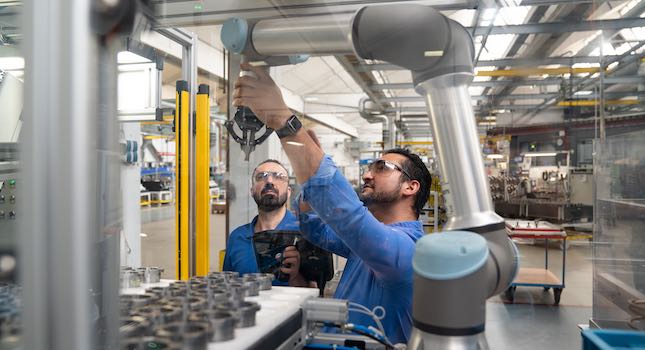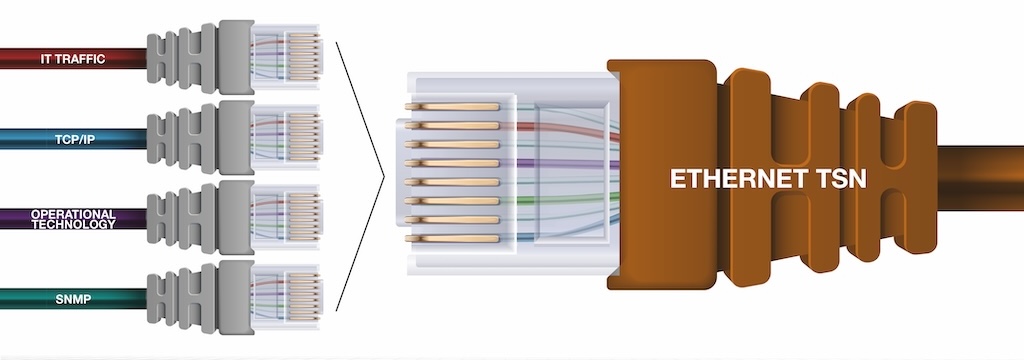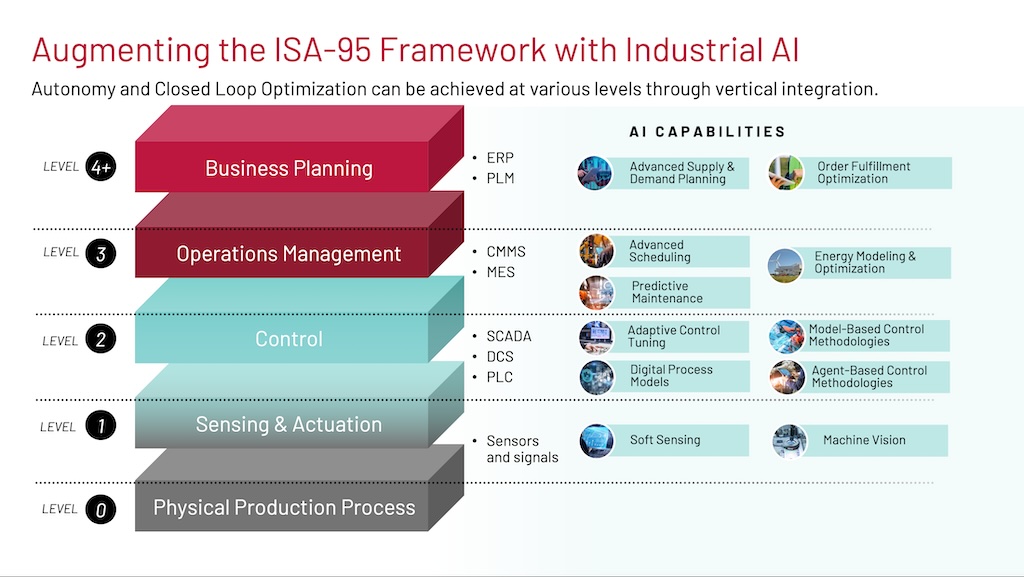How does your maintenance department stack up? You’ll know if it’s an industry leader if no more than 10% of total maintenance hours are spent responding to unexpected equipment failures. That’s the benchmark of leading organizations. The rest of maintenance time is devoted to activities that have been planned, such as preventive maintenance (25% to 35%), predictive maintenanc...
How does your maintenance department stack up? You’ll know if it’s an industry leader if no more than 10% of total maintenance hours are spent responding to unexpected equipment failures. That’s the benchmark of leading organizations. The rest of maintenance time is devoted to activities that have been planned, such as preventive maintenance (25% to 35%), predictive maintenance (45% to 55%) and even some proactive maintenance (5% to 15%).
This reactive nature can be illustrated by considering an everyday occurrence: an operator sees a perplexing issue on the control system console but usually cannot leave the post to investigate. Maintenance is called to check it out, and this becomes a reactive work request — new work that was unplanned. It is a wasteful and potentially expensive use of resources, which is why those who lead their industries in operational excellence operate mostly in a planned rather than reactive environment.
Unfortunately, there are too few such leaders and too many laggards where reactive maintenance is standard practice more than 50% of the time. If the maintenance personnel in your plant are spending the majority of available man-hours ‘fighting fires,’ take heart; it’s not too late to change.
In fact, a variety of asset optimization technologies and supporting services have evolved in the last few years to help you manage your plant’s assets in a way that will pay off in the long run and provide a substantial return on investment.
Creating An Asset Optimization Culture
How can you shift to planned maintenance? Start by creating an asset optimization culture that focuses predictive maintenance on key production assets. This will bring new insight to the health of assets and give supervisors more useful information on which to base maintenance decisions.
A number of progressive companies are now implementing asset management programs that carefully monitor the condition and performance of critical production assets in order to manage the move toward total asset optimization. This blending of technologies and complementary services allows the production system to deliver or exceed the operating results for which it was designed and to maintain a high level of performance. As a result, costs for operations and maintenance are reduced, while quality, throughput and availability increase. Optimizing assets can actually produce a 3% to 5% increase in plant revenues.
The first steps toward change often begin by bringing in asset optimization consultants to identify areas for greatest potential to improve availability and performance. Through proven methods that evaluate the base of critical production assets, experts typically develop a prioritized asset list, which later becomes a part of a larger strategic roadmap for achieving asset optimization goals.
Productivity improvements can be driven using the predictive diagnostics delivered through:
-
Intelligent management of instruments and valves
-
Smart health management on mechanical equipment
-
Performance monitoring of mechanical and process equipment.
-
Intelligent Device Management
The growing population of smart field devices used to support industrial automation is taking on a level of importance beyond their basic measurement and control functionality. These instruments, with embedded microprocessor chips, generate a vast amount of information about their own condition and the condition of equipment on which they are mounted.
With the introduction of open system architecture and advanced asset management software, every instrument on a control network can now be continuously monitored and their diagnostic data retrieved, stored in a database and processed for use in four principal ways:
-
Routine maintenance — including loop checkout, configuration and calibration
-
Troubleshooting of suspected problems
-
Predictive maintenance to prevent unexpected upsets and reduce costs
-
Automatic documentation of maintenance activities.
-
Technicians using this software are now able to look into production processes in a way that was never before possible. If a ‘device alert’ arises from continuous monitoring of these smart instruments, a technician can quickly identify a specific instrument by tag number and compare its current condition with its operating parameters. If a discrepancy is found, it is often possible to establish the cause online and correct the problem immediately. Or, the information may be used to predict how long the device can continue to perform, providing the basis for scheduling a repair or replacement.
Savings are realized in both startup and ongoing maintenance activities, including these actual experiences:
-
One-time commissioning and start-up costs are reduced by up to $150 per device as documented in several cases — often enough to pay the software, hardware and installation costs
-
Startups are faster. At the DuPont Fayetteville Works in North Carolina, loop checkout time was reduced by hundreds of hours due to more efficient interlock validation and commissioning, enabling production to begin at least 10 days early
-
Configuration time is slashed because users can download entire configurations to field devices via a ‘drag and drop’ technique
-
Calibration time is reduced dramatically by uploading device calibration information from an instrument database to a route-based handheld calibrator
-
Plant downtime was reduced from 18% to 4% at Cabot Corp. in Midland, MI, while production increased by 10%
-
Routine maintenance was reduced 10% at Alabama Power through faster troubleshooting and predictive maintenance
-
Unplanned shutdowns were reduced 10% at an Akzo Nobel facility in The Netherlands
-
Allied Tube in Illinois realized annual savings of $85,000 by preventing nitrogen loss through improved monitoring and tighter process control.
-
Smart machinery health management
Deterioration of mechanical equipment due to aging is usually associated with misalignment or imbalance, corrosion, fouling, sediment build-up, poorly lubricated parts and wear. New technologies allow a comprehensive view of both the health and process performance of operating machinery so it can be maintained properly.
For high priority assets, online applications are justified. Smart machinery health management builds on existing safety shutdown systems with a combination of machinery prediction and performance monitoring. Machinery health prediction capabilities reveal specific machinery faults along with trending and graphical displays. Performance monitoring applications are designed to determine if an asset is delivering the desired performance. Specialists in thermodynamic performance provide insight to actual machine efficiency and identify evolving problems.
For low-to-medium priority assets, vibration and lubrication data can be gathered using portable equipment on a monthly or quarterly schedule. Trained personnel, using specialized machinery health management software, analyze the data to obtain an overall picture of the mechanical condition and to pinpoint machines showing signs of degradation. Alarm reports indicate the severity of a condition, enabling plant staff to evaluate each situation and take action as necessary.
Costs are reduced through predictive maintenance, avoidance of unexpected downtime and extending the run time of essential production equipment. For example:
-
A single production outage was averted on a chalk drying fan failure following machinery health analysis at the BASF facility in Antwerp, saving the company several thousand dollars
-
A 43% reduction in emergency mechanical maintenance was achieved at Johns Manville through periodic vibration monitoring, while machine availability and throughput increased
-
A 20% reduction in emergency maintenance costs was achieved at the Tarrant Regional Water District in Texas by integrating both vibration and oil data to predict mechanical failures
-
A 10% gain in facility performance resulted from identification of degraded performance on a compressor aboard the Triton Floating Production Storage and Offloading vessel operated by Amerada Hess in the North Sea
-
A 24% drop in performance on one compressor was identified by employing a site-centralized equipment performance monitoring solution on liquefied natural gas compression trains at the Atlantic LNG Company in Trinidad and Tobago.
-
Asset optimization
‘Best cost’ producers combine condition and performance monitoring technologies with corresponding changes in their work practices and infrastructure to overcome the natural stresses of ongoing industrial production. Through the application of asset optimization technologies and services, equipment failures can be predicted and downtime limited.
Most of those costly unplanned responses to unexpected failures can be eliminated and your maintenance department can join the ranks of the industry leaders.
Author Information Bill Broussard is marketing manager of PlantWeb Services for Emerson Process Management/Asset Optimization Division. Strategy, commitment ensures asset performance improvement
By Herbert Lichtenberg
Strategic Asset Management, Inc.
Asset performance is the efficiency by which a company converts its investment in plant, equipment and inventories into sales and profits. In today’s rapidly changing business climate, challenged by global competition, reaching the maximum level of asset performance is essential and should be among a company’s strategic objectives. Therefore, asset performance improvement initiatives are vital to enhancing or maintaining a company’s competitive position. However, the data shows that the majority of operational improvement initiatives fall short of expectations.
Improving asset performance
Getting the highest possible return from a company’s assets should be a strategic objective for any company’s leadership team. However, numerous studies have shown that, by the companies’ own admission, more than two thirds of these efforts do not achieve expected results. The findings from the studies that involved customers and suppliers found that from their vantage point, the improvement performance was even worse. That’s a dismal track record considering increased global competition for both markets and investment dollars. Most companies have a sound understanding of their operational challenges and competitive leverage points. They take unprecedented actions to improve their performance, yet these efforts fall short of their goals. Why?
The most common explanation is that the initiatives failed because top management lacked commitment or failed to stay engaged. Once the efforts were initiated, they moved their attention to a host of other market opportunities. Interest at lower levels waned and improvement slowed down. This often resulted in eventual under-funding and under-resourcing of the improvement effort.
A related factor is that often specific improvement methods were selected because of their popularity or ‘curb appeal’ and forced on operating level managers who did not understand the approach or how it would strengthen the company’s competitive position. These managers lacked enthusiasm and commitment, which resulted in poor implementation — particularly when they focused on tools and not systemic issues.
A third reason is that the selected methodologies lacked alignment, or were in conflict with the company’s strategic goals. As a result, initiatives had conflicting goals and were in competition for common resources.
Fourth, the improvement efforts lacked a documented plan, structure and metrics for accountability. Consequently organizational alignment needed to produce the desired results was missing.
Engaging the whole enterprise
Although many other reasons for the lack of success can be found in the studies, the factors illustrated above — either individually or in combination — are due the lion’s share of the credit. The following are key success factors for implementing operational improvement initiatives:
Top management must be visible and stay engaged
Middle managers and their staffs must understand and buy into the philosophies and tools. They must also understand the impact these philosophies and tools can have on the company’s ability to compete
The philosophies and tools that are selected must be compatible and aligned with the company’s strategic objectives
A structure and process must be developed that aligns the organization around the same objectives and provides a means of tracking progress.
Provisions must be made to provide for these success factors. The first step on this road is to ensure that achieving the highest possible level of asset performance is among the company’s strategic objectives. This puts the focus on strategic rather than improvement opportunities and raises the level of visibility and commitment of the effort. It requires that the company’s senior managers be involved in the development of the asset performance improvement strategy and that they guide the process.
To develop the long-term commitment required for success, the initiative must generate internal motivation at all levels of the organization. Ongoing communication about the goals, resources, constraints, progress and changes to plans is a must.
Once the strategy has been defined, individual ownership can be achieved by involving managers and employees at all levels in defining the tactics to be employed in the strategy and the development of the implementation plan. After the initiative is underway and has achieved some morale-boosting successes, a phase comes when problems get harder to solve.
Finally, for the initiative to progress over the long term, it must be guided within a disciplined organizational structure that has a consistent focus and is driven by clear metrics, closely linked to customer needs. The improvement infrastructure must be organized in such a way that it provides a means to involve those who will ultimately make the effort work. It must have a process for reviewing, assessing, communicating and developing ongoing improvement plans.
Herb Lichtenberg is senior vice president of production practice for Strategic Asset Management Inc., Unionville, CT
-
-
-



